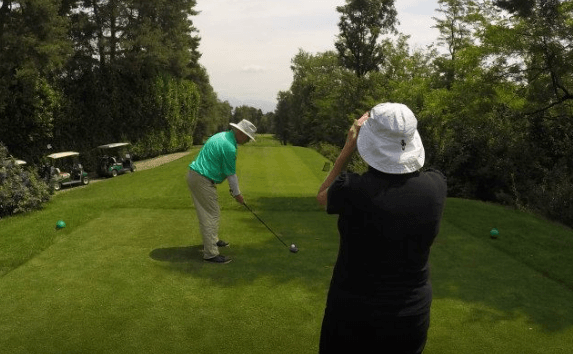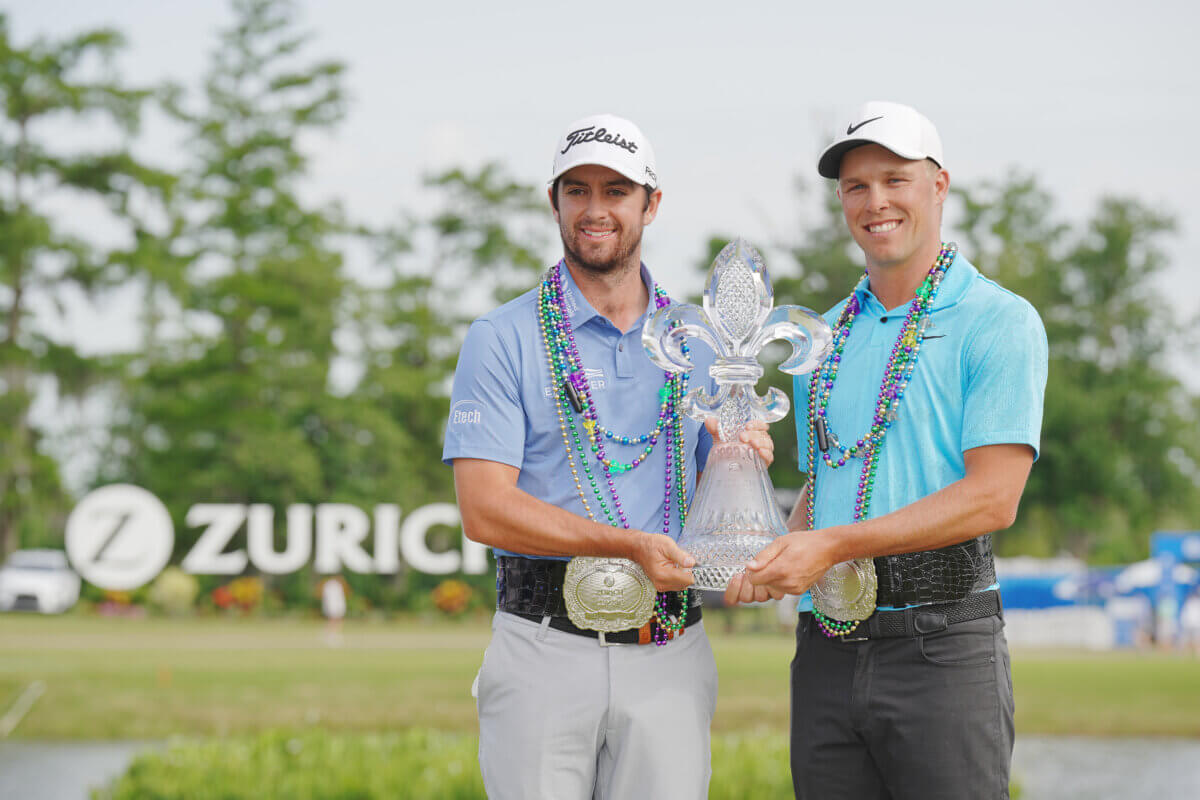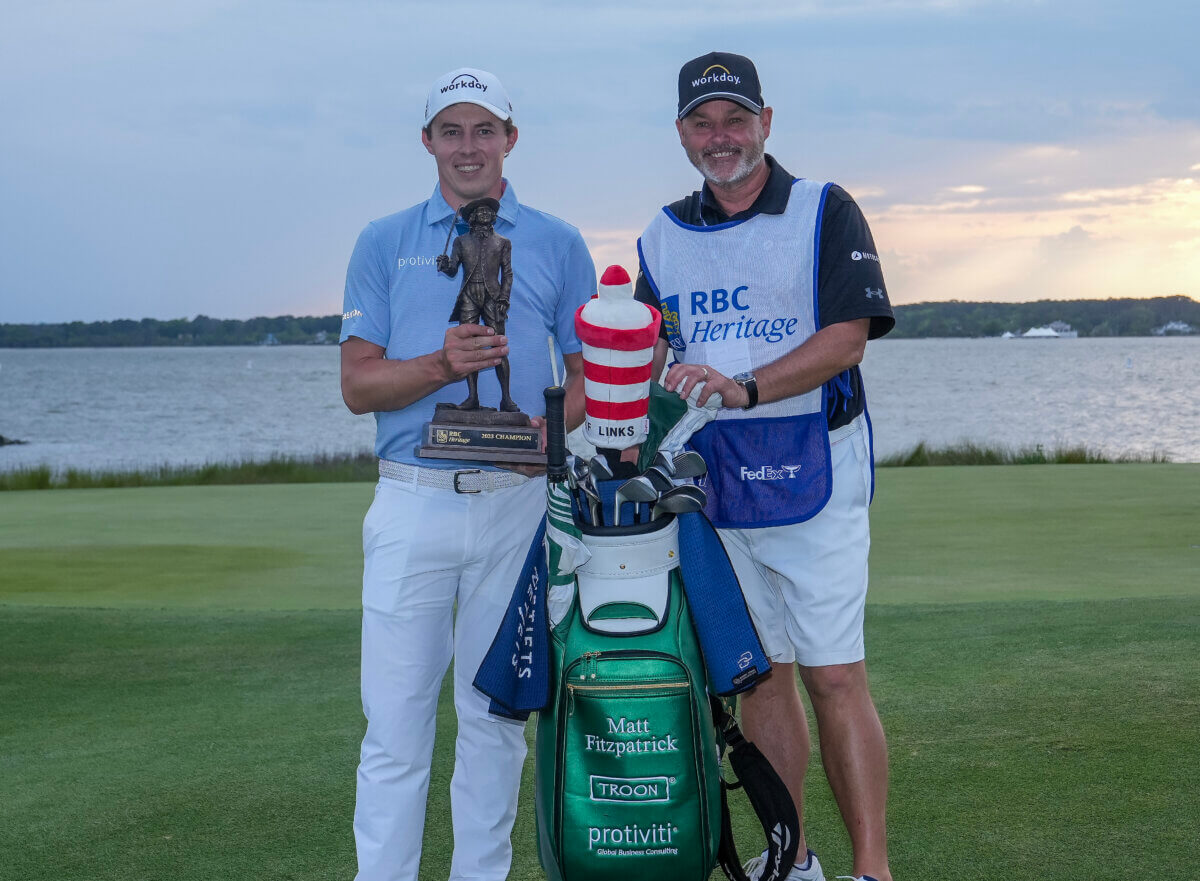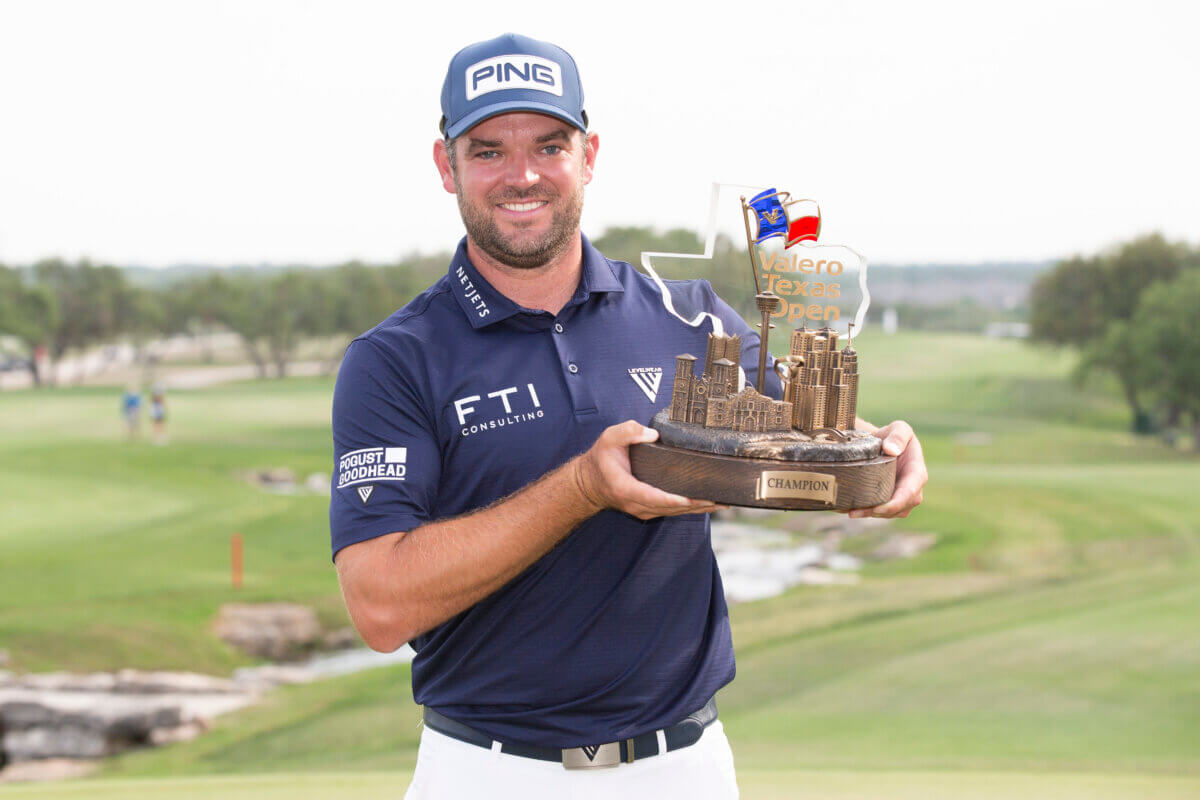Blind Faith: This is what it’s like to be a caddie for the U.S. Blind Golf Association

It really is amazing when you watch them in person. As soon as the caddie steps away, the players look just like anyone else on a tee box or over a putt.
But the incredible part starts way before that in the fact that they arrive at the golf course or have a desire to play at all.
The players in the United States Blind Golf Association (USBGA) are among the most inspiring golfers I’ve ever witnessed.
I’ve played golf since I was young and was lucky to have a dad who showed us how the game is a parallel to life. So, growing up and establishing a professional career outside of the game were shaped by those experiences, but I hadn’t found a way to give back via golf prior to my time ‘looping’ as part of the USBGA.
RELATED: Learn how you can volunteer at the U.S. Blind Golf Association
There was a funny point where I was just not enjoying playing golf at all in my late 20s. I happened to remember hearing about “blind golf” a long time before that, then later in life I started to see it as potentially a good way to help out and maybe get a totally different perspective on the game.
I Googled it to learn more and was eventually paired with a player. The organization facilitated everything, and it was just like meeting a friend at the course once we got plans straightened out.
It’s nice for the players and caddies, because in my player’s case, he has a couple different coaches other than myself, to allow for plenty of chances to play. I’m part of the roster, and that’s good enough for me.
The next couple of golf seasons after I got started with the USBGA were a blast. My player and I competed in a couple of ‘major’ tournaments, one in upstate New York at a beautiful Gilded Age country club and another down in Tampa at a popular golf resort.
We traveled together and had a ton of fun just hanging out. Like a lot of the other players and caddies in the USBGA community, we would meet up and practice locally to stay sharp.
It’s interesting to explain to people but caddying/coaching for a blind golfer entails exactly what it sounds like: The players need help with everything, but the ball strike itself.
I was always responsible for watching the “chicken wing,” which makes sense because it’s just as simple as needing someone to point it out for a sighted player, and in my player’s case it was the elbow flying out and wreaking havoc on our swing plans. Just like any other caddie who has been ignored, there were plenty of times my player politely disagreed that the “chicken wing” had nothing to do with our miss.
It got so hot at a couple of places last summer that with all the physical movements associated with caddying in the USBGA, it was a lot to handle. Sometimes I would catch myself lining my player up towards left field and we’d have to adjust, and once or twice I didn’t catch myself at all and then I’d have to shamelessly lie to defend myself that we were aimed properly.
As part of the caddie responsibilities in the USBGA, you need to do play-by-play and color commentary, whether it’s pretty or not. If it’s ugly, that’s normally a situation where sighted players don’t say anything, but we’ve got to serve up the details as close to high definition as possible, so that usually results in a good-natured laugh for everyone, but at times the competitive part of it can sting.
The USBGA crowd is a strong community and they know each other well. They’re a lot of fun. They’re just like any other group of golfers, except they let their caddies hang out with them.
Just like any golfer, they get attached to golf clubs. And my experience as a caddie in the USBGA definitely proved that true. It took a lot of conviction in his distance control and a great sense of humor from my player on multiple occasions to take a stand against some of my club selections for him. After all, he’s the boss and if he wants a 7 iron he’s going to get a 7 iron!
A lot of the job is like conversations you hear between a sighted player and caddie, about which club to pull, or how the green is going to break from here. Then, there’s the things that can be taken for granted, like which direction we’re pointing, or where the ball is anyway…
Some of the players I saw in the USBGA could beat me straight up and I’m carrying an 11 handicap. My player and I were decent in competition, and I felt a ton of responsibility for how well we executed because, as a caddie, I’ve got to paint a picture for him as to what we’re looking at, and then he’s got to make it happen when I step away.
Framing a player for any shot in this setting requires construction of the stance and verbal instruction as to how to incrementally improve for optimized posture. Before that takes place, a vivid description and set of requirements for the shot need to be relayed, along with any swing adjustments from a coaching perspective.
After that, I look like a regular caddie, he looks like a regular player. Then we do a little cadence of “all clear” to let the player know their periphery is safe to swing the club as needed.
Watching a player with no vision go through the process of maintaining an appropriate address throughout the swing and trusting the mechanics enough to complete the motion, is nothing short of amazing. On the putting greens, the finesse required for these players to understand their positioning relative to the cup, and everything needed to navigate in between, is astounding. Of course, the player always reserves the right to blame the caddie, and it was never any different for us when I gave him a bad read, rightfully so.
There’s an incredible teamwork chemistry there. I think it’s an example of things at their best, when societal organizations like the USBGA provide people with an avenue to positively contribute to others.
The mental strength displayed by these players, in a game difficult enough for those with full sight, is the exact thing people love about golf. The players, and many of their dedicated support teams in the USBGA are transformative to behold, they broaden the parameters on what mental toughness can mean.






I am a golf instructor in the Atlanta area and have been active in adaptive golf…I am interested in conducting golf clinics and also being a
Coach/caddy for a visually impaired golfer in this area.
Try this link Bob, enjoy!
https://www.usblindgolf.com/volunteer/volunteer.htm
I’m interested in being a caddy/coach